45 calories on nutrition labels
How Do They Calculate Calories on Food Labels? 22 grams of carbohydrate (22 x 4 = 88 calories) 2 grams of protein (2 x 4 = 8) ...should contain approximately 140 calories. It's important to recognize that 4-9-4 is an average, and not an exact amount. For example, 1 gram of fat in one food may yield 8.34 calories while 1 gram of fat from another food yields 9.7 calories. How to Use the Nutrition Fact Label, Eat Right, NHLBI, NIH When using the Nutrition Facts label as a guide, try these tips: Keep these low: saturated fats, trans fats, cholesterol, and sodium. Get enough of these: potassium, fiber, vitamins A and C, calcium, and iron. Use the Percent Daily Value (% DV) column when possible; 5% DV or less is low, 20% DV or more is high. Visit the Smart Food Shopping ...
Food Labeling & Nutrition | FDA Food labeling is required for most prepared foods, such as breads, cereals, canned and frozen foods, snacks, desserts, drinks, etc. Nutrition labeling for raw produce (fruits and vegetables) and ...
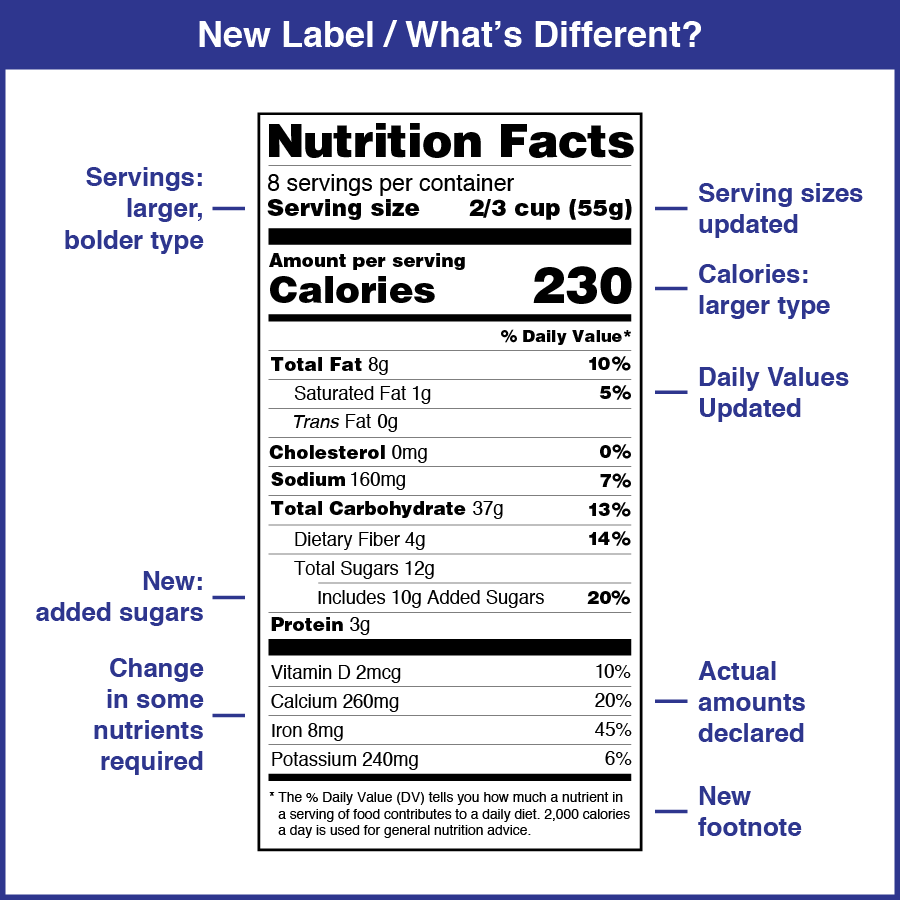
Calories on nutrition labels
How to Understand and Use the Nutrition Facts Label | FDA That is two times the calories and nutrients shown in the sample label, so you would need to double the nutrient and calorie amounts, as well as the %DVs, to see what you are getting in two... Why most food labels are wrong about calories Food labels say how many calories a food contains. But what they don't say is that how many calories you actually get out of your food depends on how highly processed it is. Raw versus cooked -... Calories for Hundreds of Foods: Your Calorie Chart Database Calories in dishes and meals are calculated by totaling the nutrition of all ingredients. Soups Soups are often low in calories, but check the label since any foods can be included. Nuts & Legumes Calories Legumes Beans and other legumes are nutritional foods with calories from carbs, fat, and protein. Nuts & Seeds
Calories on nutrition labels. Why Does Nutrition Label Calories Don't Add Up? A nutrition facts table may be used to learn about a food's nutritional worth (calories and nutrients). It helps to check & find if a food includes a little or a lot of a nutrient. It assists in comparing two goods to make educated dietary decisions. What's the inaccuracy range of nutrition labels? Nutrition labels can be around 20% inaccurate. Calories on the Menu | FDA - U.S. Food and Drug Administration You can use 2,000 calories a day as a guide, but your calorie needs may vary based on your age, sex, and physical activity level. To find out your specific calorie needs, use the Estimated Daily... Understanding Food Nutrition Labels | American Heart Association Remember that the information shown in the label is based on a diet of 2,000 calories a day. You may need less or more than 2,000 calories depending upon your age, gender, activity level, and whether you're trying to lose, gain or maintain your weight. Calorie Labels Can Be 20% Inaccurate. How to Keep up Your ... - Insider But nutritional labels can be up to 20% inaccurate, according to the FDA guidelines. That means, for example, that a serving of Greek yogurt labeled to contain 100 calories could actually weigh in at 80 to 120 calories.
The Science Behind Calories and Nutrition Facts Labels These main nutrients are fats ( lipids ), proteins and carbohydrates. Some calories you consume every day should come from each of the three nutrients. About 50 to 60% of your calories should come from carbohydrates, 30% of your calories should come from fat and 12 to 20% of your calories should come from proteins (©2020 Let's Talk Science). Are the Calorie Counts on Food Labels Accurate? A 2013 study on the food label accuracy of snack foods found that their average caloric content was more than 4 percent higher than the calories listed. The researchers suggest this was because the foods contained more carbohydrates than listed. Beyond that, the counts on labels can be inaccurate for other reasons, too. Where 2000 Calories on Food Labels Comes From - Rachael Hartley Nutrition Calories on Food Labels Doesn't Much Matter Anyway . I hope knowing this history takes away some of the power behind the 2,000 calories on food labels. At the end of the day, if we didn't live in a world that tries to convince you weight gain is the worst thing that could possibly happen, seeing calories on a food label wouldn't have any ... Nutrition Labels 101: What's Required? What's Optional? Calories. Calories, the unit measuring the energy in food, is one of the most important requirements included in the fact panel. ... The updated nutrition facts label requirements must be implemented by January 1, 2020, (or January 1, 2021, for companies that have less than $10 million in annual sales). There will be some leniency early on, as ...
Understand Nutrition Labels - Best10 If a food item has the claim of being "low-fat" on the label, there is less than 3g total fat per 100g or 1,5g per 100ml of the product. Some minced meat and processed meat might say "lean" or "extra lean" on the label. Lean mince has less than 10% total fat and the extra lean mince has less than 5% total fat. 7. Calorie counts on nutrition labels may not be that precise - Los ... The shifting numbers show how the figures on nutrition labels may not be precise. Almonds used to have about 170 calories per serving. Then researchers said it was really more like 130. A little ... How To Read Nutrition Labels - Mayo Clinic Diet All the nutrition info — including calories — refer to the amount in one serving. 2. Check the calories in one serving 40 calories is low, 100 calories is moderate, 400 calories or more is high. Remember: If you eat multiple servings, you'll need to multiply the calories by the number of serving that you eat. 3. Check the % Daily Value Food Labels | CDC - Centers for Disease Control and Prevention All the numbers on this label are for a 2/3-cup serving. This package has 8 servings. If you eat the whole thing, you are eating 8 times the amount of calories, carbs, fat, etc., shown on the label. Total Carbohydrate shows you types of carbs in the food, including sugar and fiber. Choose foods with more fiber, vitamins, and minerals.
How to Read Everything on the Nutrition Facts Label - Food Network The American Heart Association recommends no more than 100 calories from added sugar per day (about 6 teaspoons or 24 grams of sugar) for most women and no more than 150 calories per day (about 9 ...
Calories on the New Nutrition Facts Label | FDA Calories refers to the total number of calories, or "energy" you get from all sources (carbohydrate, fat, protein, and alcohol) in a serving of a food or beverage. Calories Go Big Calories are now...
Should calorie labels include the amount of exercise required to burn ... Calorie labels should include the amount of physical exercise required to burn the food off, according to a new study. They believe it will be simpler to understand than the current traffic light ...
Learn How the Nutrition Facts Label Can Help You Improve Your Health Two columns provide calorie and nutrition information for one serving and for the whole package. Nutrients Required on Label Vitamin D and potassium values are required. Calcium and iron will continue to be required. Vitamins A and C will no longer be required but can be included on a voluntary basis. Slight Decrease in Sodium Allowance
Daily Value on the New Nutrition and Supplement Facts Labels Which Nutrients Are Required to Be Listed on the Nutrition and Supplement Facts Labels? The Nutrition Facts label must list total fat, saturated fat, trans fat, cholesterol, sodium, total...
The Basics of the Nutrition Facts Label - Academy of Nutrition and ... The Nutrition Facts applies to the serving size, so if the serving size is one cup and you eat two cups, you are getting twice the calories, fat and other nutrients than what is listed on the label. Step 2: Compare the Total Calories to Your Individual Needs
Are Calorie Counts on Food Labels Accurate? • Cathe Friedrich A calorie is the amount of energy needed to raise the temperature of one gram of water by 1 degree Centigrade, although the calorie count you see on food packages is usually expressed in kilocalories, equivalent to 1,000 calories. These days, calorie counts are measured using another technique called the Atwater system.
Understanding Food Labels | The Nutrition Source | Harvard T.H. Chan ... The label lists the calorie amount for one serving of food. The serving size, also important but often unnoticed, is easily doubled or tripled when not paying attention to the serving size, quickly inflating the calories. Highlighting both of these values emphasizes their importance and relationship.
The Rules for Calorie Content on Nutrition Labels - JoeHx Blog And 100 calories just so happens to be the calories listed on the nutrition label! Whole Grain Oatmeal. The nutrition label for whole grain oatmeal. The above nutrition label for whole grain oatmeal says that one serving of the milk has 2.5 grams of fat, 27 grams of carbohydrates, and 5 grams of protein.
Calories for Hundreds of Foods: Your Calorie Chart Database Calories in dishes and meals are calculated by totaling the nutrition of all ingredients. Soups Soups are often low in calories, but check the label since any foods can be included. Nuts & Legumes Calories Legumes Beans and other legumes are nutritional foods with calories from carbs, fat, and protein. Nuts & Seeds
Why most food labels are wrong about calories Food labels say how many calories a food contains. But what they don't say is that how many calories you actually get out of your food depends on how highly processed it is. Raw versus cooked -...
How to Understand and Use the Nutrition Facts Label | FDA That is two times the calories and nutrients shown in the sample label, so you would need to double the nutrient and calorie amounts, as well as the %DVs, to see what you are getting in two...
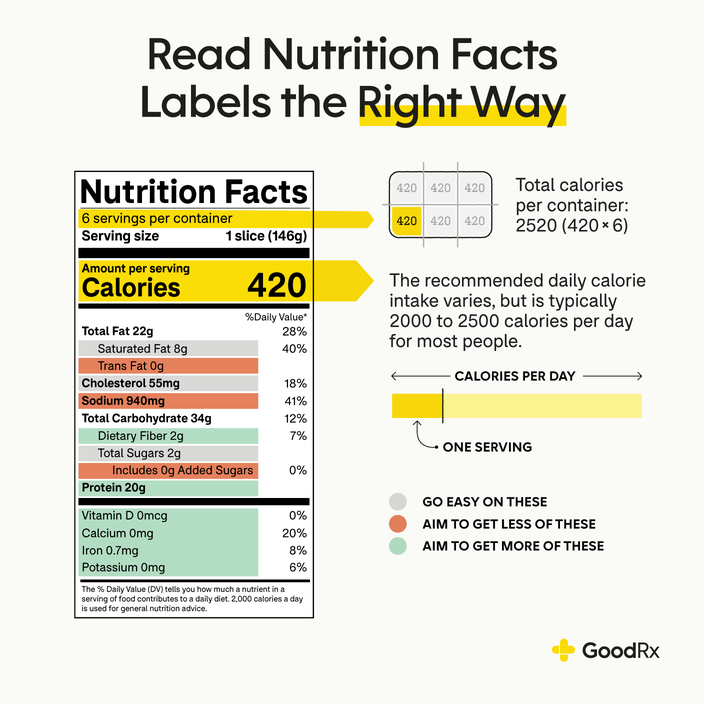
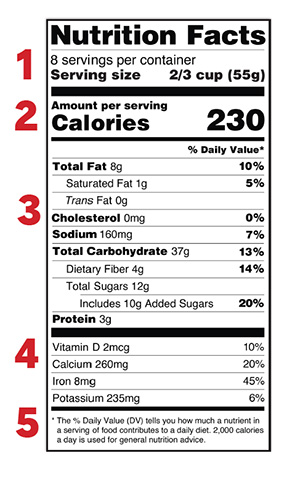





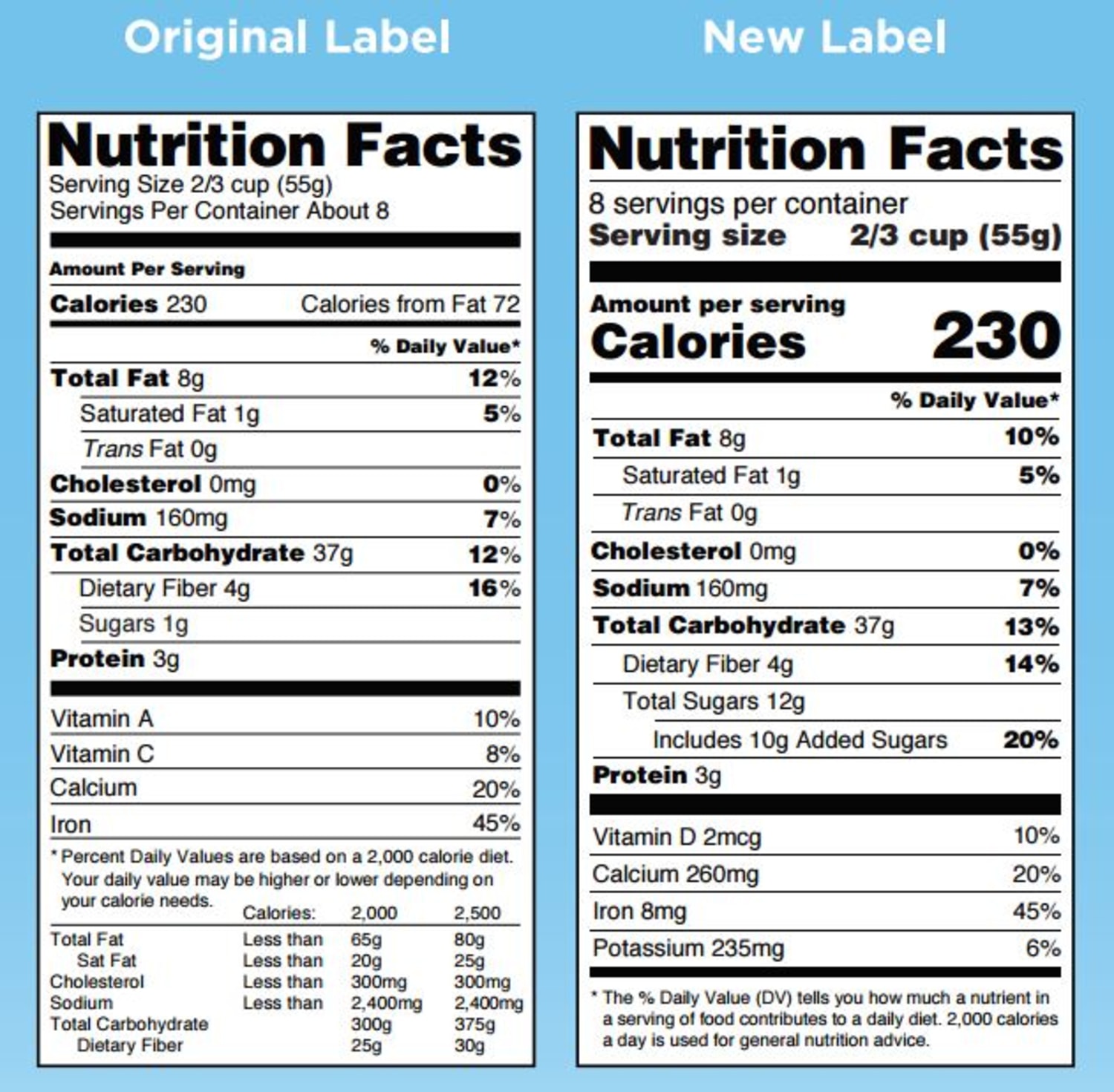
:format(jpeg)/cdn.vox-cdn.com/uploads/chorus_image/image/46902630/nutrition-label.0.0.jpg)
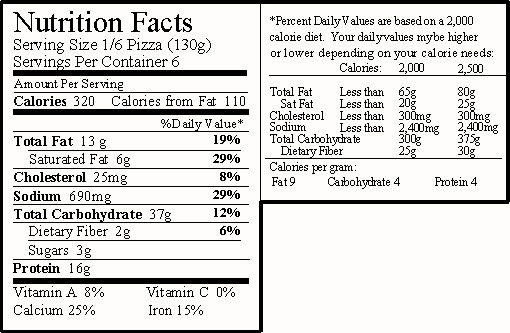
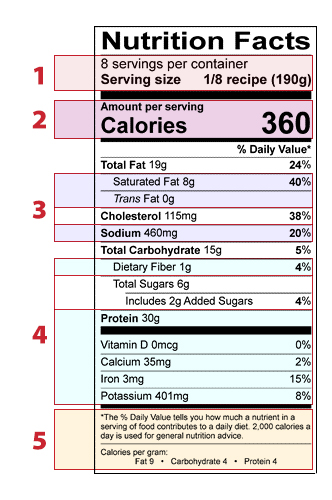

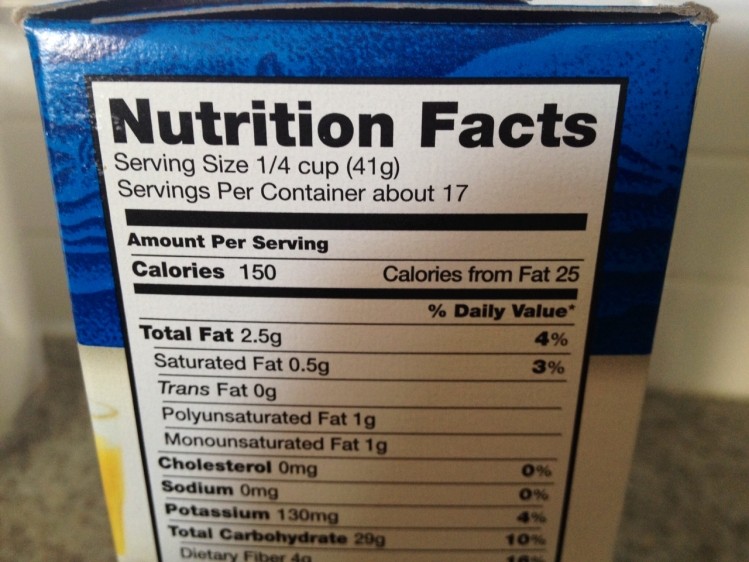
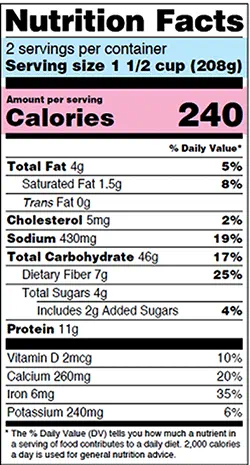
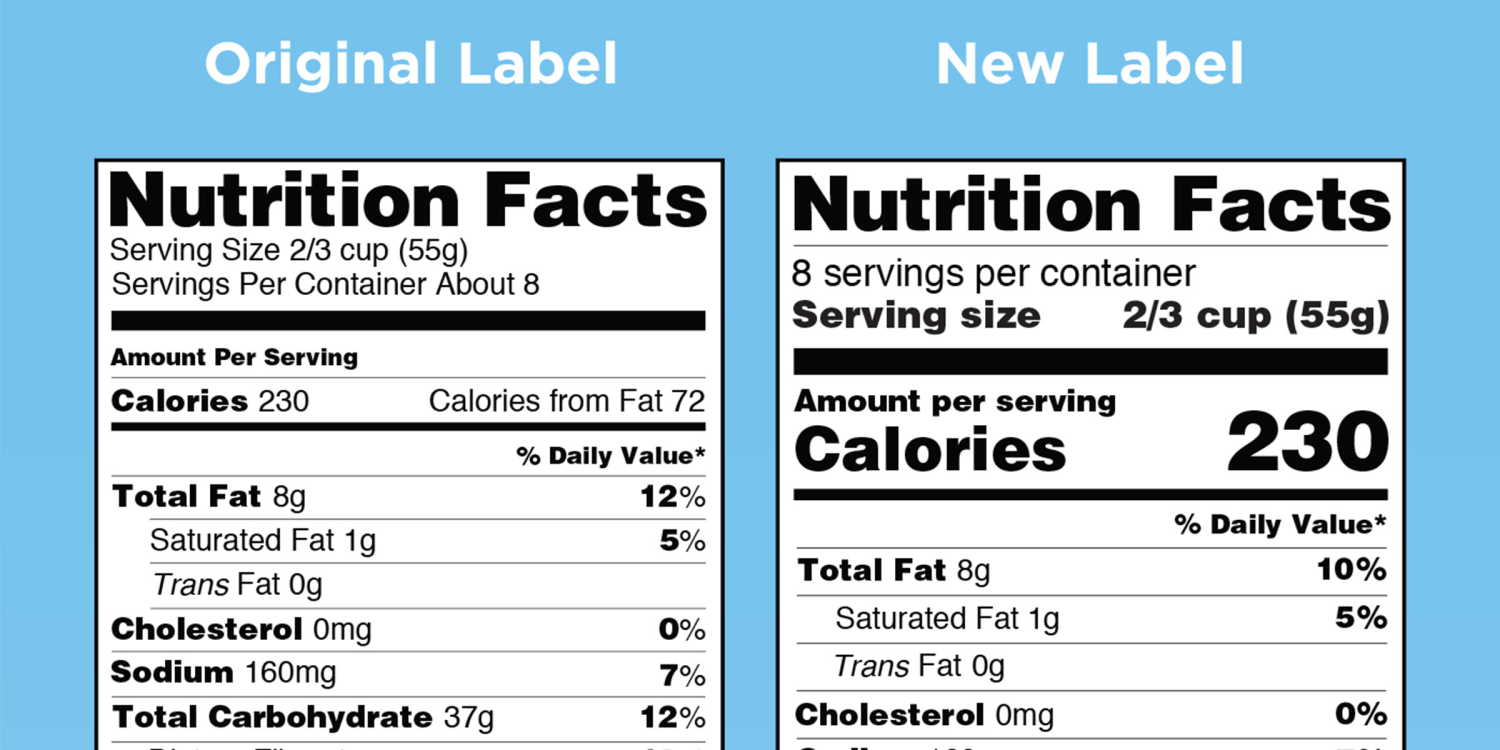


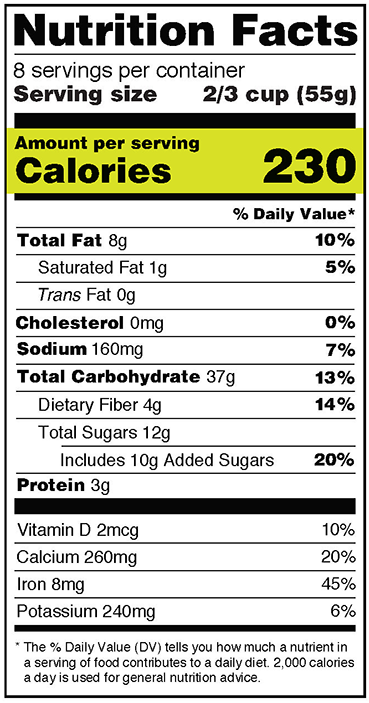


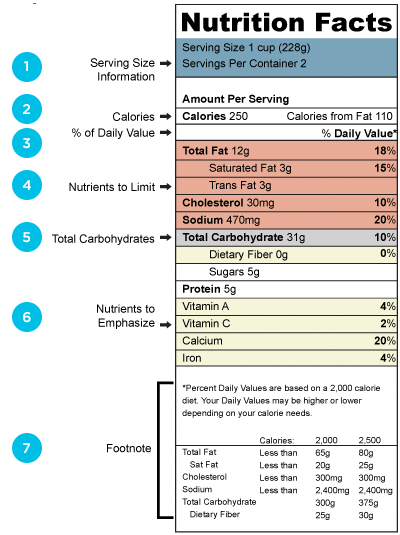

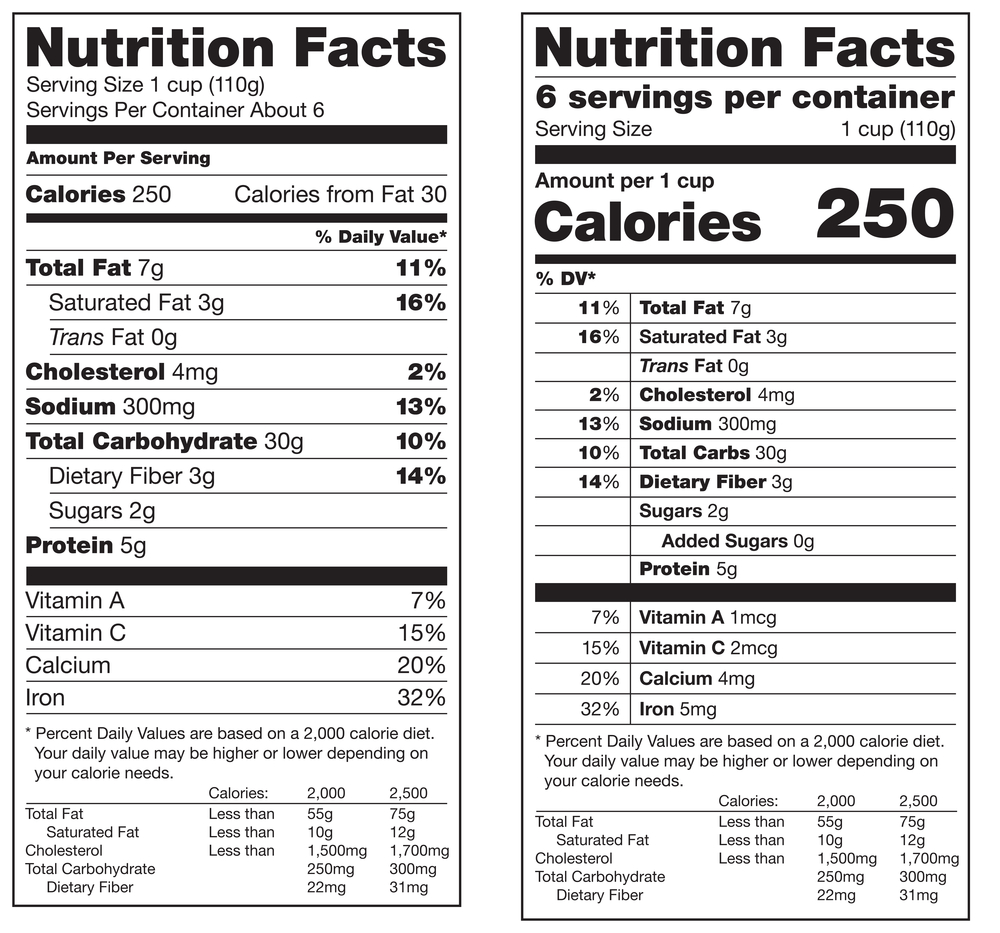
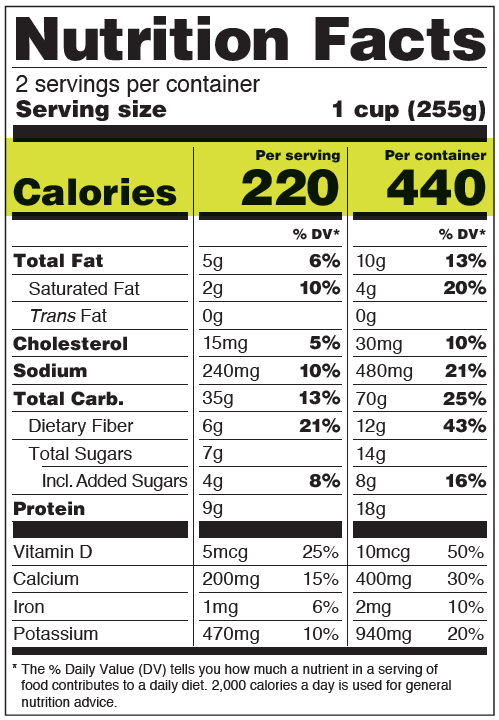



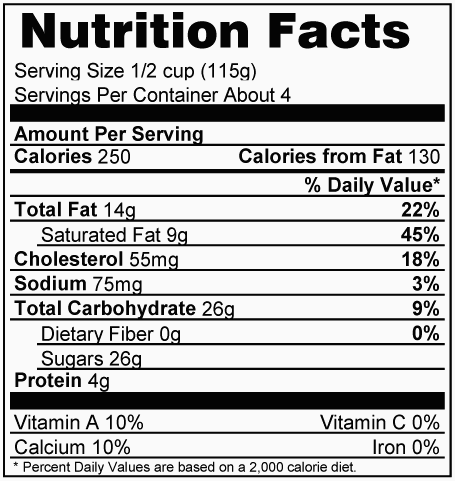

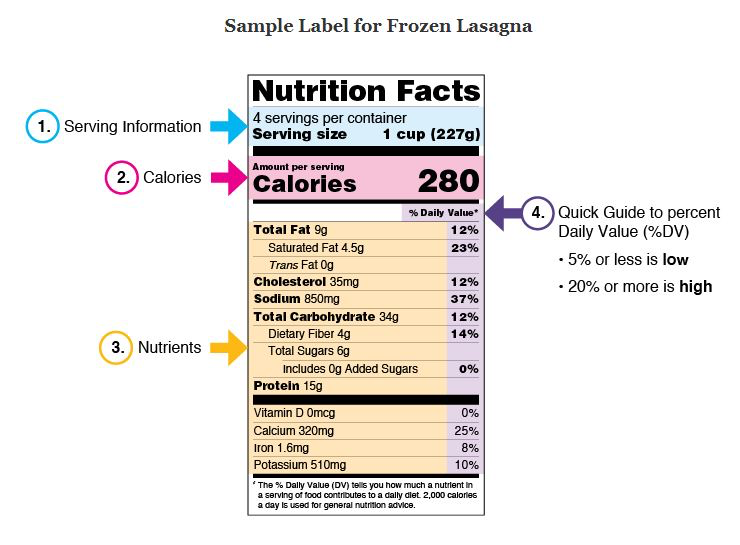
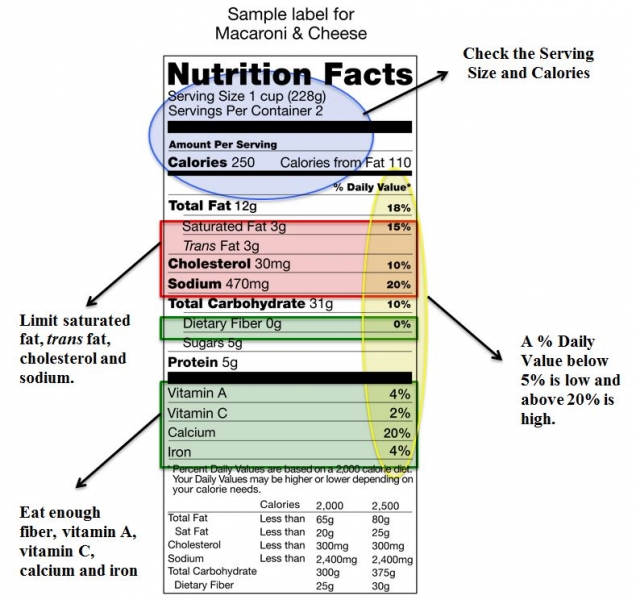
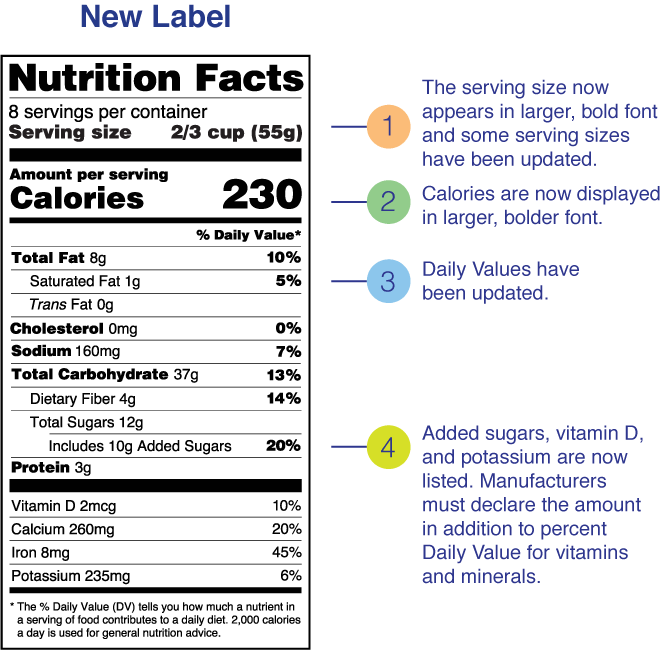
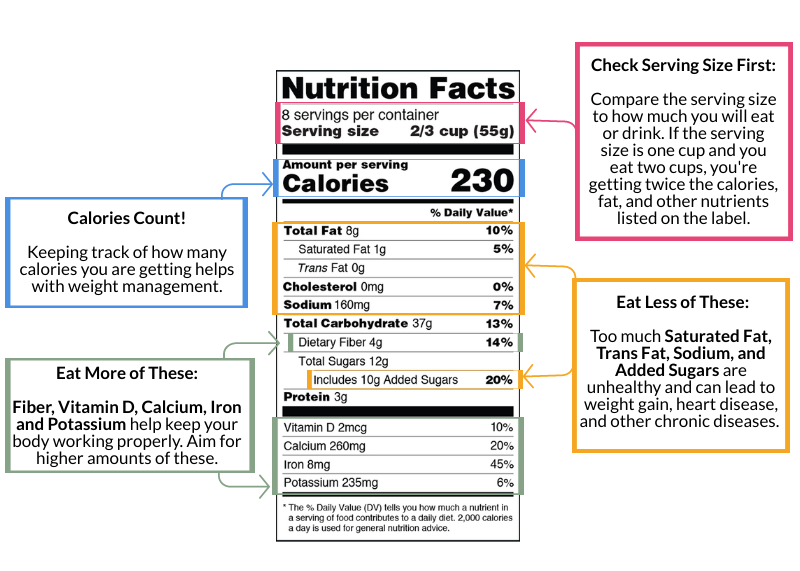
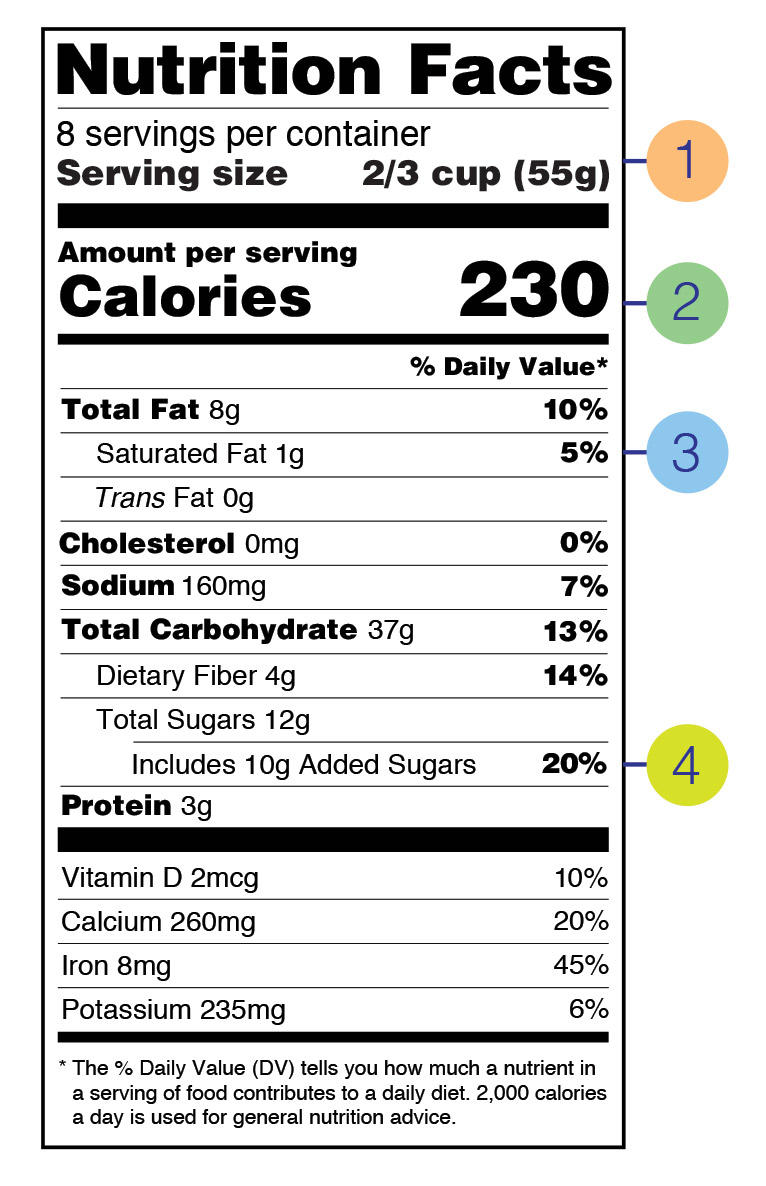



/Untitled-design-1--5755c3703df78c9b46903dab.jpg)


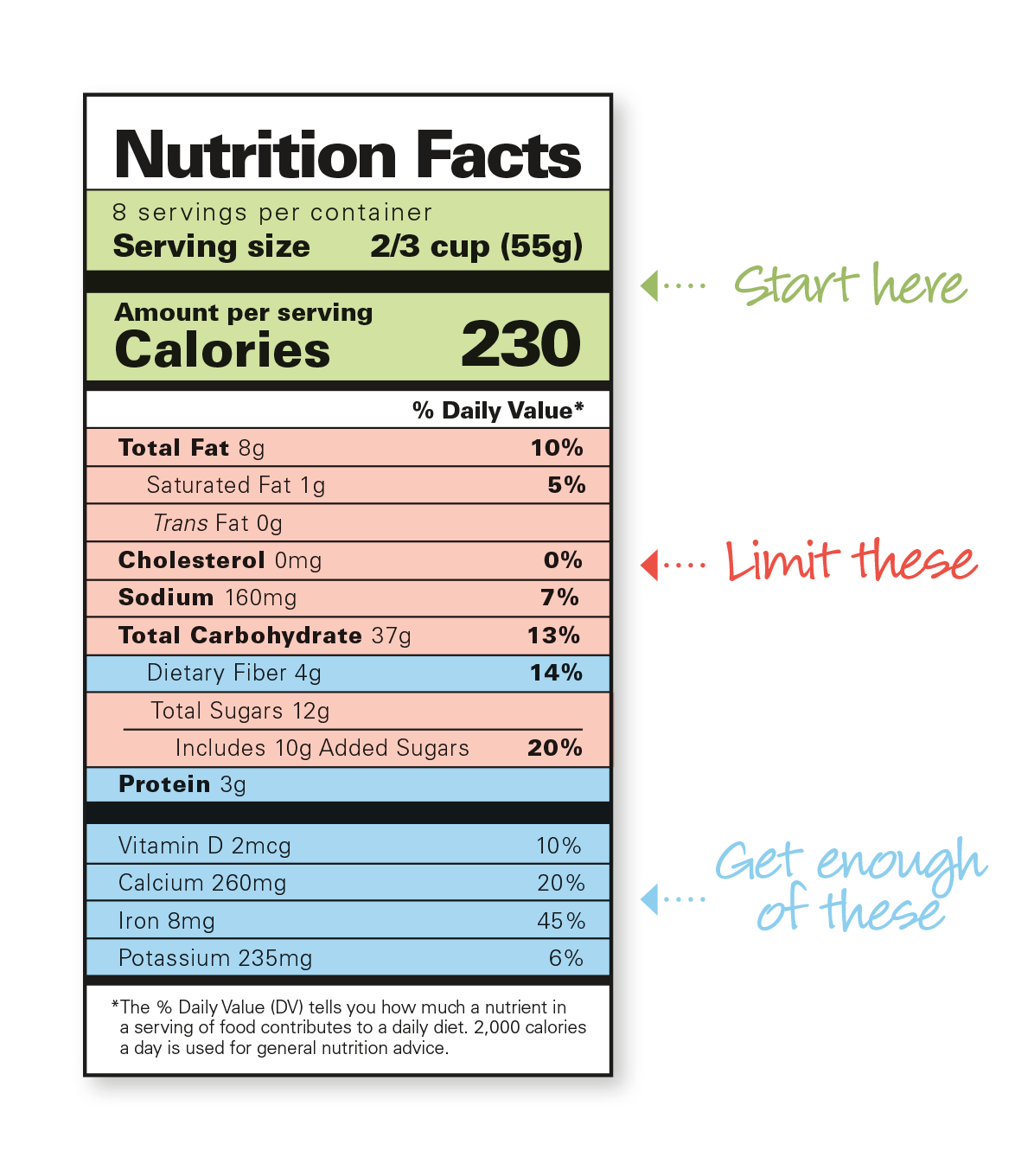

Post a Comment for "45 calories on nutrition labels"